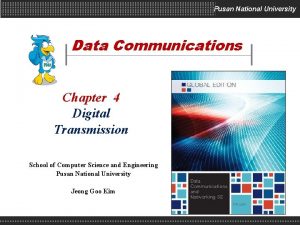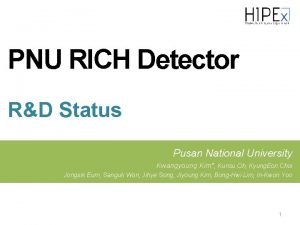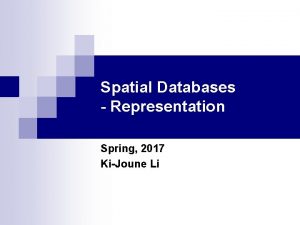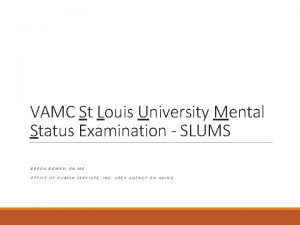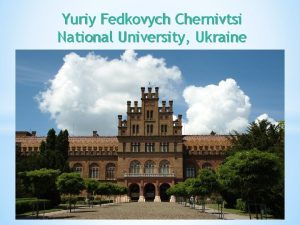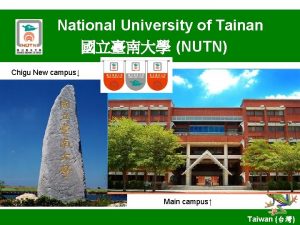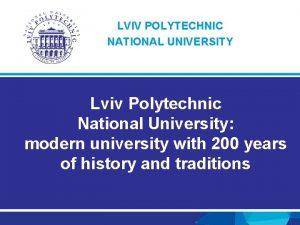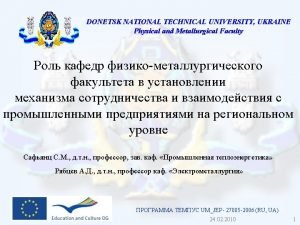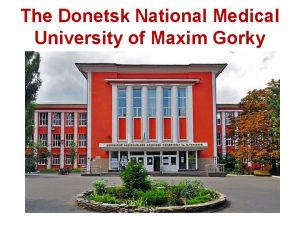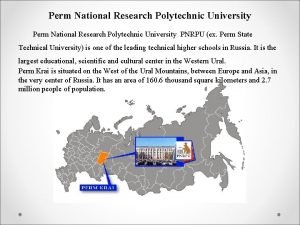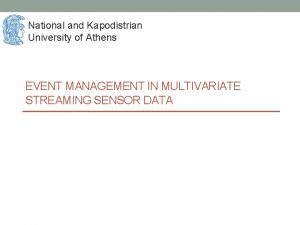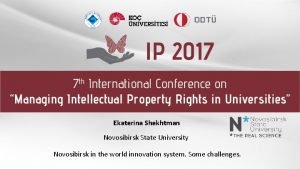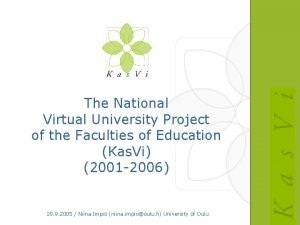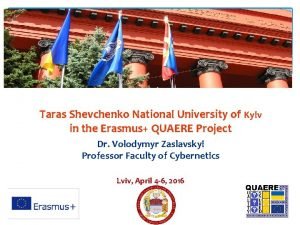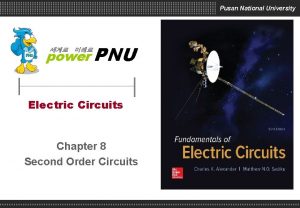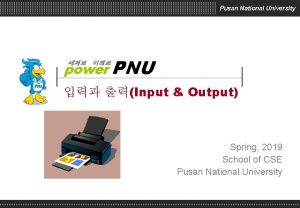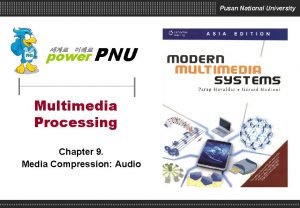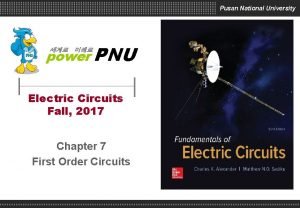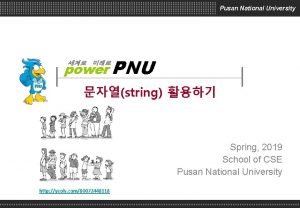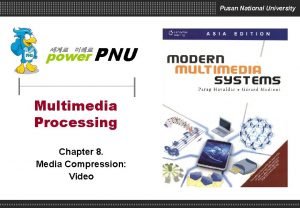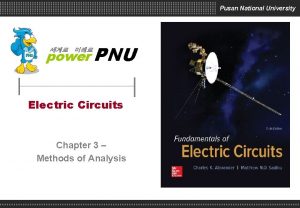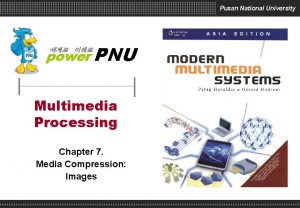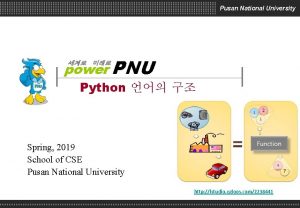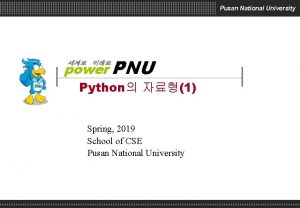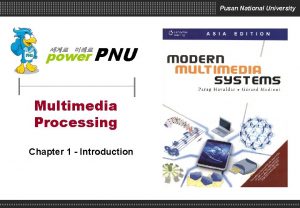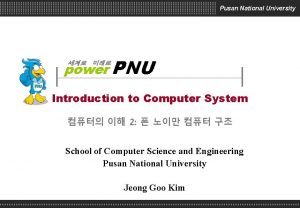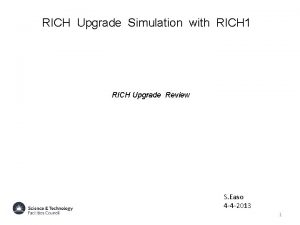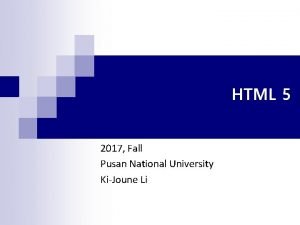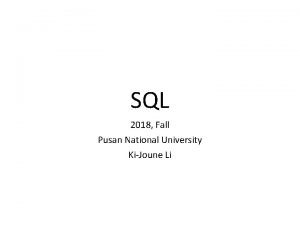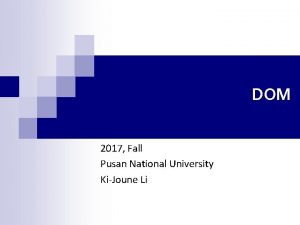PNU RICH Detector RD Status Pusan National University




![Motivation § Ring Imaging CHerenkov Detector Image courtesy of [Yi Jungyu] Result of CBM Motivation § Ring Imaging CHerenkov Detector Image courtesy of [Yi Jungyu] Result of CBM](https://slidetodoc.com/presentation_image_h/1dbfa58a68728579604ad6a2a8fe193b/image-5.jpg)
















- Slides: 21

PNU RICH Detector R&D Status Pusan National University Kwangyoung Kim*, Kunsu Oh, Kyung. Eon Choi Jongsik Eum, Sanguk Won, Jihye Song, Jiyoung Kim, Bong-Hwi Lim, In-Kwon Yoo 1

Contents • Motivation • Concept of PNU RICH v. 2. 5 • Previous results & Beam Test @PAL • Analysis using time difference • Summary and Outlook 2

Motivation § Introduction to CBM RICH • CBM interested in QCD phase diagram (deconfinement & chiral PT. ) • Prototype of RICH detector is developed in PNU • RICH detector for electron ID (J/Ψ , ρ mesons decay to e+ e-) • Au+Au collision from 2 -45 Ge. V in 2016 3

Motivation § Cherenkov radiation Medium (radiator: CO 2) Neutral Atom ↑ Dipole charged particle Image courtesy of [Yi Jungyu] 4
![Motivation Ring Imaging CHerenkov Detector Image courtesy of Yi Jungyu Result of CBM Motivation § Ring Imaging CHerenkov Detector Image courtesy of [Yi Jungyu] Result of CBM](https://slidetodoc.com/presentation_image_h/1dbfa58a68728579604ad6a2a8fe193b/image-5.jpg)
Motivation § Ring Imaging CHerenkov Detector Image courtesy of [Yi Jungyu] Result of CBM simulation 5

Concept of PNU RICH 2. 5 § Prototype concept • RICH detector is consist of 3 parts : Radiator, Mirror, MAPMT Parameter PNU-RICH 2. 5 Radiator length 1. 76 m Radiator N 2, CO 2 Curvature 3. 2 m Reflexibility >85% (λ>200 nm) Ring radius(60 Me. V) 36. 61 mm, 45. 96 6 From J. S Eum’s thesis

Previous Results § Simulation for PNU RICH(Integrated events) 60 Me. V 400 Me. V § Experiment @PAL (Integrated events) 7

Beam test @ PAL § Setup of PNU RICH 2. 5 Image courtesy of [Jongsik Eum] 1. 76 m 8

Beam test @ PAL § Dataset(CO 2) § Position of mirror Run Dipole(A) Mirror Focus 13. 7 5° Half 13. 7 half Unfocus 14. 3 0° H 8500 C 03 half H 8500 C 5(degree) R-series PLANACON 0(degree) • Focus = Background + Cherenkov, Un. Focus = Background only • Dipole current change the energy of electron beam • 13. 7 A ->32. 6 Me. V , 14. 3 A ->34. 0 Me. V • The reason using ~30 Me. V beam is to reduce trigger rate 9

Analysis using time difference § Time difference MAPMTs -H 8500 C 03 -H 8500 C -PLANACON -R-series Trigger (Coincidence) DITTO+VETO ROC Board (Read-Out Controller) 10

Analysis using time difference § How to separate intervals of time difference Relatively small peak also included 11

Analysis using time difference Red: Focus, Green: Half(C 03), Blue: Unfocus § Background dominant interval(pedestal only) All H 8500 C 03 H 8500 C Radius R-series PLANACON Black: Focus-Unfocus Interval(-3555, -3525) 12

Analysis using time difference Red: Focus, Green: Half(C 03), Blue: Unfocus § Background dominant interval(unfocus>focus) All H 8500 C 03 H 8500 C Radius R-series PLANACON Black: Focus-Unfocus Interval(-70, -30) 13

Analysis using time difference Red: Focus, Green: Half(C 03), Blue: Unfocus § Signal Dominant interval(focus>half>unfocus) H 8500 C 03 All H 8500 C Interval(-8000, 8000) All PMT Remove the Pedestal peak Radius ~60 Me. V Black: Focus-Unfocus PLANACON R-series Signal Dominant ? Interval(-200, -110) 14

Analysis using time difference Red: Focus, Green: Half(C 03), Blue: Unfocus § Finding specific interval Expected Radius ~32 Me. V ~60 Me. V Black: Focus-Unfocus Interval(-170, -160) 15

Analysis using time difference Red: Focus, Green: Half(C 03), Blue: Unfocus § Finding specific interval Expected Radius ~32 Me. V ~60 Me. V Black: Focus-Unfocus Interval(-160, -150) 16

Analysis using time difference Red: Focus, Green: Half(C 03), Blue: Unfocus § Finding specific interval Expected Radius ~32 Me. V ~60 Me. V Black: Focus-Unfocus Interval(-150, -140) 17

Analysis using time difference Red: Focus, Green: Half(C 03), Blue: Unfocus § Finding specific interval Expected. Dipole current ~60 Me. V Radius =13. 6 ~ 14. 3 A ~32 Me. V Black: Focus-Unfocus ~23 A Interval(-150, -140) 18

Summary & Outlook § Summary(case of CO 2) • In ~32 Me. V we have to use time difference • Signal dominant interval is (-160, -130)ns • Cherenkov ring will be statistically found • Result of N 2 don’t agree with our approach -> more studying § Outlook • Fit Quality cut makes the results more meaningful • Cross-check about N 2 & look the ring directly over hundred Me. V → Confirm the operation of PNU RICH Detector ! 19

Back up

Time difference window
 Pusan national university uniform
Pusan national university uniform Outlook pnu
Outlook pnu Pnu point
Pnu point Pnu korea
Pnu korea Saint louis university mental status examination
Saint louis university mental status examination National unification and the national state
National unification and the national state Chernivtsi university ukraine
Chernivtsi university ukraine Kyiv national university of culture and arts
Kyiv national university of culture and arts National university of tainan
National university of tainan Lviv polytechnic university
Lviv polytechnic university Donetsk national technical university
Donetsk national technical university Bila tserkva national agrarian university
Bila tserkva national agrarian university Jehee
Jehee Seoul national university computer science
Seoul national university computer science M.gorky donetsk national medical university
M.gorky donetsk national medical university Pnrpu
Pnrpu National technical university kharkiv polytechnic institute
National technical university kharkiv polytechnic institute National and kapodistrian university of athens events
National and kapodistrian university of athens events Seoul national university history
Seoul national university history Novosibirsk national research state university
Novosibirsk national research state university National virtual university
National virtual university Taras shevchenko national university of kyiv rector
Taras shevchenko national university of kyiv rector
